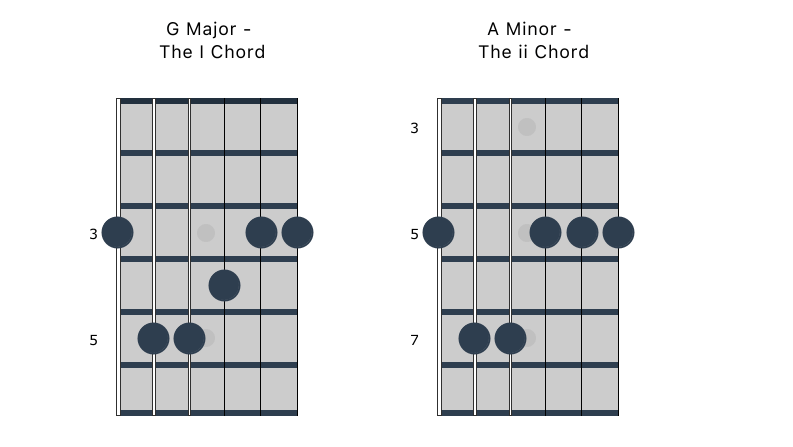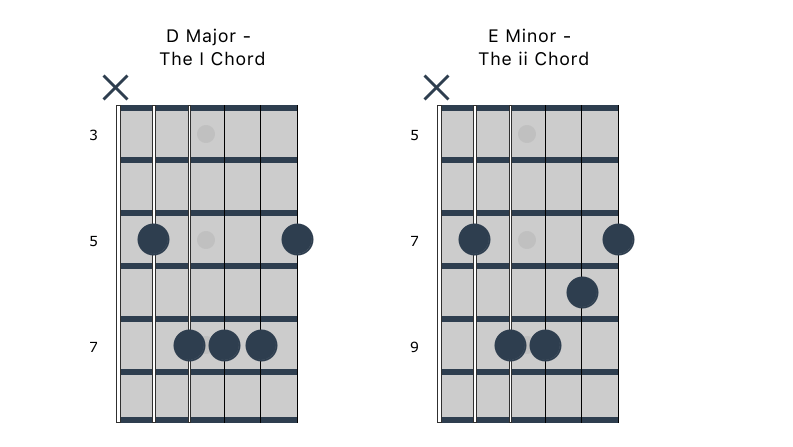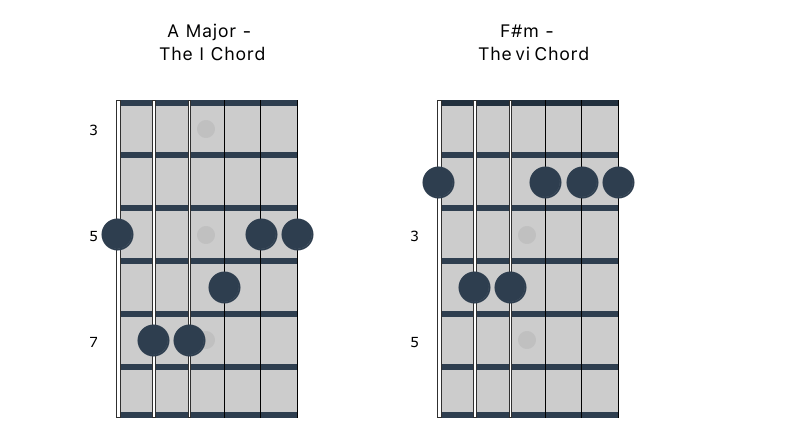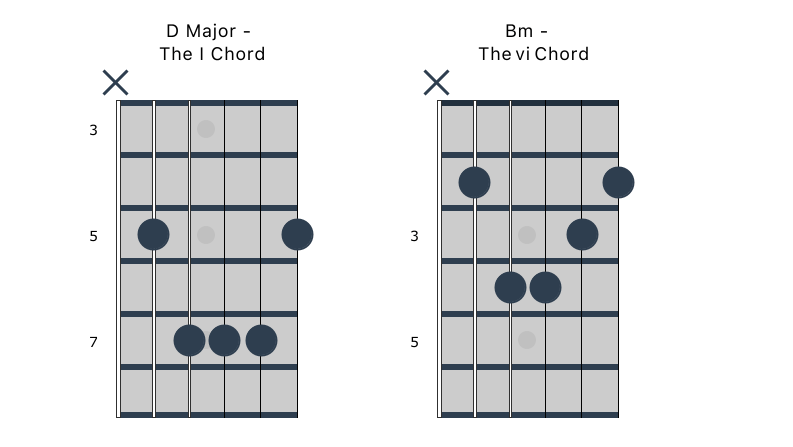Quick Patterns for Finding Chords
Guitar Noises #28: March 16, 2022
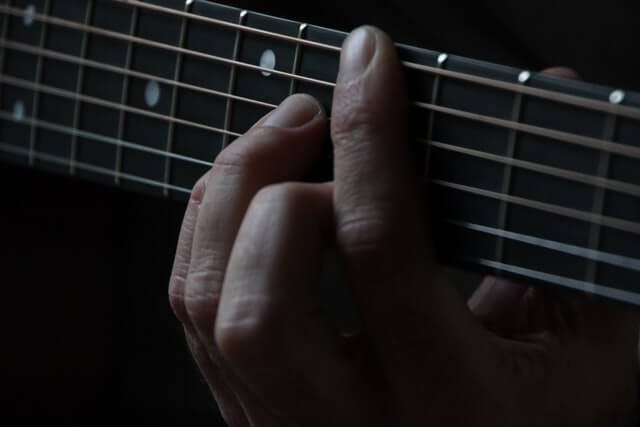
Beginners spend a lot of time trying to learn bits of songs they like, and so they should. Getting familiar sounds out of the guitar is what the beginner is working for. But you can’t stay a beginner forever. Music is supposed to be fun and to keep the fun going you need to keep on growing.
Once you have a few riffs and recognizable bits of songs in your repertoire what should you work on next?
Most of your development as a musician comes from woodshedding. This is the hard work you put in on your own. A lot of guitar sites will try to entice you with the lure of being easy or fun, but that’s misleading. Struggling through the early stages of guitar is hardly fun or easy. How is it fun when you can’t do what you want to do? If only someone would spell out exactly what you need to learn and in what order. You could practice guitar comfortably knowing that you aren’t just wasting your time.
To move past the beginner stages there are a few things you should be able to do well. Have you learned most of the notes on the fretboard or at least know how to find them quickly? Do you know the most common chord progression used in countless three-chord songs? Can you change between the I, IV and V chords using movable shapes?
If you answered “yes,” or “sort of,” to these questions, a good next step is to get comfortable with the most common chord progressions. There may be millions of songs out there, but you really only need to know a handful of patterns to play most of them. Working on these progressions until you can run through them in any key will level up your understanding of guitar and your ability to pick up new songs.
I would like to share some of the most common and useful chord progressions, but first there is a bit more prerequisite knowledge regarding chords. In Movable Chord Shapes I went over two helpful patterns for finding the IV and V chords in any key. With those patterns we can play almost any three chord song. However, a lot of music uses more than three chords. To get comfortable playing almost any song we need to know a few more patterns. These new patterns will help us quickly locate the ii chord and the vi chord in any key. Once you put all the patterns together you’ll be ready for almost any chord progression that comes your way.
Quick Method for Finding the ii and vi chord
Most guitarists, even struggling ones, can name the notes on the 5th and 6th strings. It’s essential to know those notes when playing barre chords. Barre chords, for all the pain they sometimes cause, are pretty simple. There are only 4 shapes to know for all the major and minor chords.
There’s the E shape that is used for major chords with a root note on the sixth string. There is also the E minor shape for minor chords.
Chords with their root note on the fifth string can be played with the A shape and the A minor shape. With these four shapes you can play any major or minor chord.
If you studied Movable Chord Shapes you can already cycle through a I - IV - V chord progression. By learning four more patterns you’ll know how to quickly get to the ii chord and vi chord. That is going to cover most of the common chord progressions we will encounter.
Here are the patterns for getting the ii chord:
Any time you are playing an E shape barre chord, simply move up two frets and use the Em shape. This is the ii chord. For example, G major then up two frets is Am.
Any time you are playing an A shape barre chord, move up two frets and play the Am shape. For example, D to Em.
Committing these patterns to memory will help you quickly find and play the ii chord. Even if you’re supposed to be playing a song with open chords, you can quickly run through this barre chord pattern to work out the ii chord. Figuring out what chord to play next is a lot less intuitive with open chords, and this pattern will work for any chord or key.
Next, there are two patterns for finding the vi chord:
Any time you are playing an E shape barre chord, move down three frets and use the Em shape. This will give you the vi chord. For example, from A major back three frets is F#m.
Any time you are playing an A shape barre chord, move down three frets and play the Am shape. For example, D to Bm.
These patterns always work, regardless of the chord. Memorize the patterns so you can easily move to the ii or vi chord without having to work it out in your head first.
With the patterns we’ve looked at so far you can play nearly every popular chord progression. In the next newsletter I’ll lay out what I think are the most essential chord progressions. Putting it all together isn’t hard, and it amounts to a pretty big step for a novice musician who wants to level up. You’ll find it easier to write your own music or jam on songs with just a handful of chords.
Peace and love.


